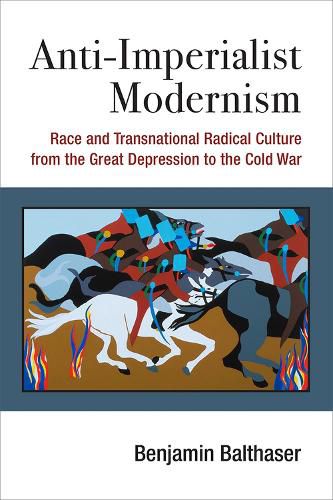Readings Newsletter
Become a Readings Member to make your shopping experience even easier.
Sign in or sign up for free!
You’re not far away from qualifying for FREE standard shipping within Australia
You’ve qualified for FREE standard shipping within Australia
The cart is loading…






Anti-Imperialist Modernism suggests that U.S. multi-ethnic cultural movements, located in political parties, small journals, labour unions, and struggles for racial liberation, helped construct a common sense of international solidarity that critiqued ideas of nationalism and essentialized racial identity. The book thus moves beyond accounts that have tended to view the pre-war Popular Front through tropes of national belonging or an abandonment of the cosmopolitanism of previous decades.
The book’s impressive archival research brings to light the ways in which a transnational vision of modernism and modernity was fashioned through anti-colonial networks of North/South solidarity. Chapters examine farmworker photographers in California’s central valley, a Nez Perce intellectual traveling to the Soviet Union, imaginations of the Haitian Revolution, the memory of the U.S.-Mexico War, and U.S. radical writers traveling to Cuba.
The last chapter examines how the Cold War foreclosed these movements within a nationalist framework, when activists and intellectuals had to suppress the transnational nature of their movements, often rewriting the cultural past to conform to a patriotic narrative of national belonging.
$9.00 standard shipping within Australia
FREE standard shipping within Australia for orders over $100.00
Express & International shipping calculated at checkout
Anti-Imperialist Modernism suggests that U.S. multi-ethnic cultural movements, located in political parties, small journals, labour unions, and struggles for racial liberation, helped construct a common sense of international solidarity that critiqued ideas of nationalism and essentialized racial identity. The book thus moves beyond accounts that have tended to view the pre-war Popular Front through tropes of national belonging or an abandonment of the cosmopolitanism of previous decades.
The book’s impressive archival research brings to light the ways in which a transnational vision of modernism and modernity was fashioned through anti-colonial networks of North/South solidarity. Chapters examine farmworker photographers in California’s central valley, a Nez Perce intellectual traveling to the Soviet Union, imaginations of the Haitian Revolution, the memory of the U.S.-Mexico War, and U.S. radical writers traveling to Cuba.
The last chapter examines how the Cold War foreclosed these movements within a nationalist framework, when activists and intellectuals had to suppress the transnational nature of their movements, often rewriting the cultural past to conform to a patriotic narrative of national belonging.